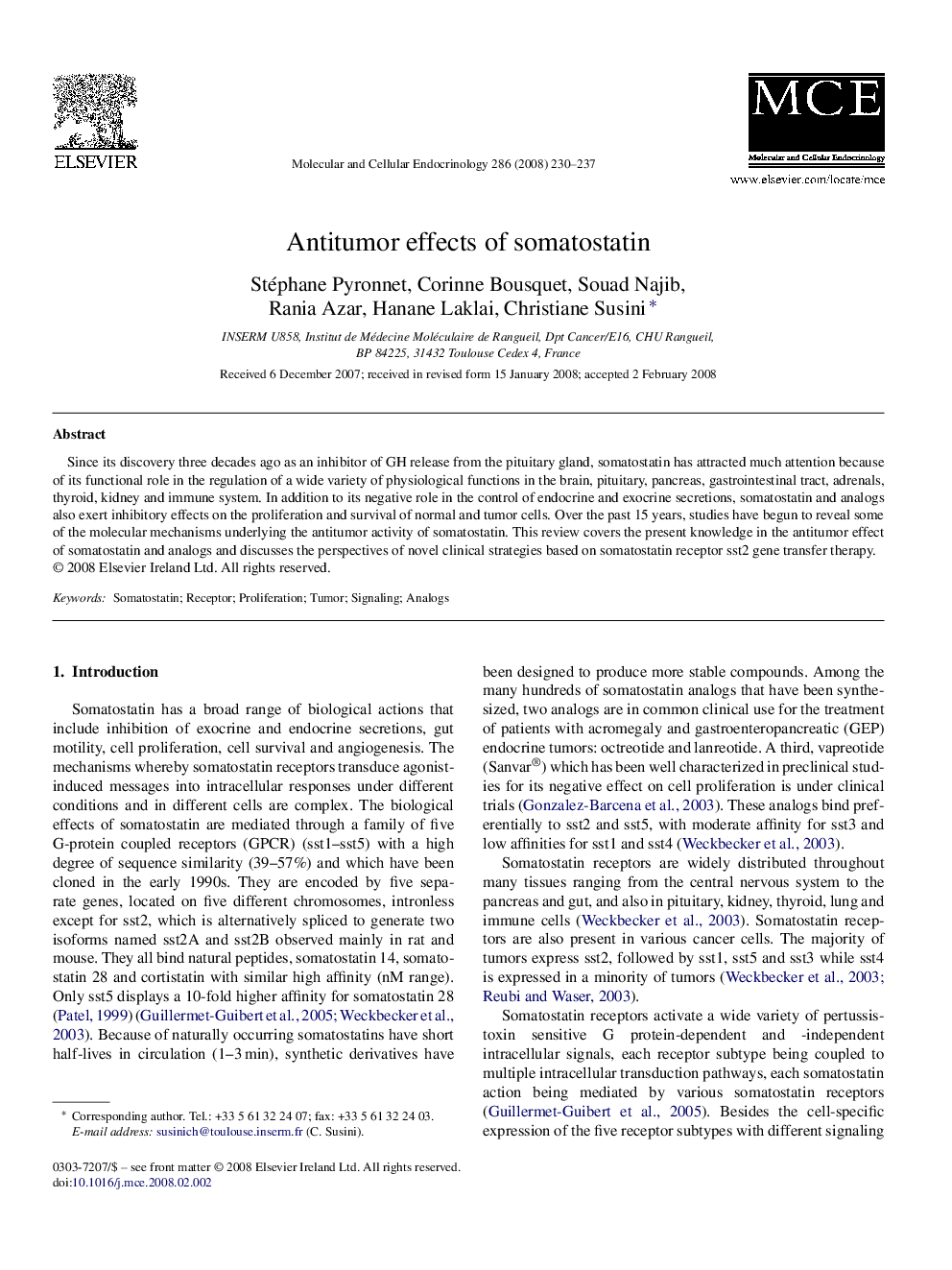| Article ID | Journal | Published Year | Pages | File Type |
|---|---|---|---|---|
| 2197669 | Molecular and Cellular Endocrinology | 2008 | 8 Pages |
Since its discovery three decades ago as an inhibitor of GH release from the pituitary gland, somatostatin has attracted much attention because of its functional role in the regulation of a wide variety of physiological functions in the brain, pituitary, pancreas, gastrointestinal tract, adrenals, thyroid, kidney and immune system. In addition to its negative role in the control of endocrine and exocrine secretions, somatostatin and analogs also exert inhibitory effects on the proliferation and survival of normal and tumor cells. Over the past 15 years, studies have begun to reveal some of the molecular mechanisms underlying the antitumor activity of somatostatin. This review covers the present knowledge in the antitumor effect of somatostatin and analogs and discusses the perspectives of novel clinical strategies based on somatostatin receptor sst2 gene transfer therapy.
